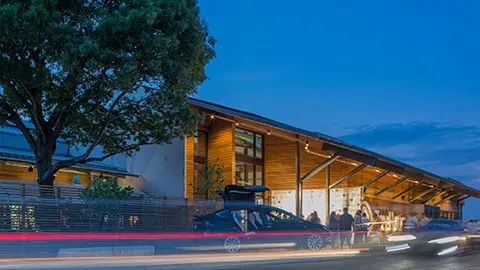Reducing Strain on the Grid
With more electric cars hitting American roads every day, some drivers are concerned that too many EVs will strain the electrical grid, making charging more difficult and limiting their mobility. And yet, just like gasoline vehicles, EVs spend a lot of their time parked, and not in use. New technology called bi-directional charging – sometimes called vehicle-to-grid, or V2G – lets EV owners take advantage of their electric cars’ battery capacity to help support greater resiliency for the power grid – while at the same time putting a few dollars in their pocket.

Bi-Directional Charging
How does it work? Well, the batteries in electric vehicles are big, and can store a lot of energy. A bi-directional charger not only provides electricity to the battery to charge it, but also lets the battery provide energy to the grid. In some parts of the country, homes or businesses can generate enough energy from wind or solar sources to take care of all of their energy needs, and then some. When more energy is generated than there’s a use for, a bi-directional charger stores that energy in EV batteries – which can then re-distribute power to the grid when there’s more demand. Networking all of those EV batteries together using internet technology means they act together as a huge energy storage device, reducing the strain on the electrical grid.
But wait a minute, you say. What if the grid is sucking energy out of my EV just as I need it? For one thing, all of those EV batteries acting in a networked fashion would reduce the impact on the state of charge of any individual battery. Plus, almost all EVs let you pre-program a desired departure time and state of charge to ensure that you always have the range you need, when you’re ready to take a trip. In the interim, your EV helps to support the grid, and cuts your energy bills.

BMW, Ford, and Honda Aim for Greater Impact
One of the hiccups of bi-directional charging in the past has been the limited number of vehicles that connect together to the grid, and thus their overall impact on the electrical load. But now, BMW, Ford, and Honda have formed a partnership to create a company called ChargeScape, which will connect hundreds of thousands of EVs across the U.S. Owners of vehicles from these three companies (as well as the Mini, Lincoln, and Acura brands) can share their EVs’ electricity with their local grid. ChargeScape’s smart vehicle-to-grid services and bi-directional charging hardware should, in theory, make it easy for EV drivers to connect to the grid and reduce their energy load and CO2 emissions.
While some bi-directional charging schemes have been put in place in countries like the UK, ChargeScape is likely to have a bigger impact in the U.S., simply because it will bring together EVs from three major companies – including the second-highest volume seller, Ford. Aggregating vehicles from all those brands adds more energy capacity – and allows the network to respond more quickly to demand. As a result, it should be easier for ChargeScape to make favorable arrangements with local and regional utilities to provide financial benefits to EV drivers.

The Range You Need When You Need It
While bi-directional charging automatically balances out the load between individual EV batteries, ChargeScape notes that drivers will always be in charge of when their vehicles charge and discharge – and can therefore ensure they have the power they need, when they need it.













